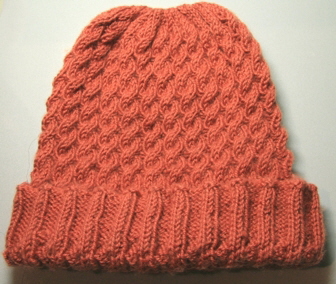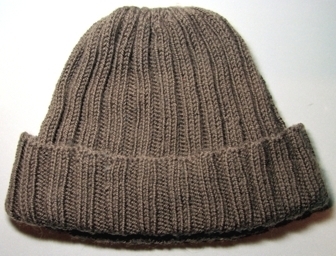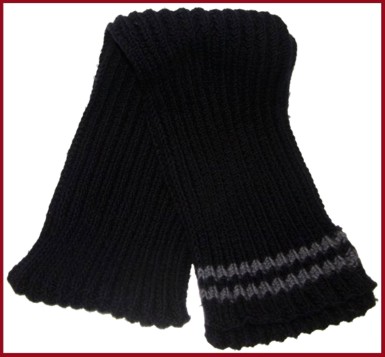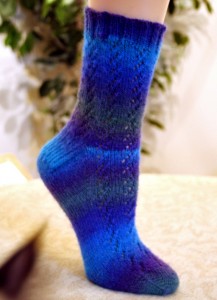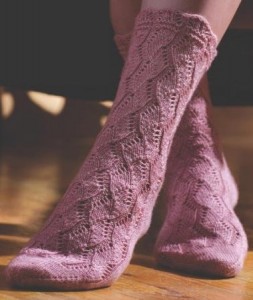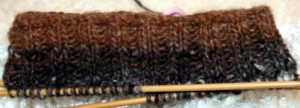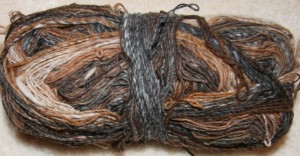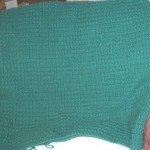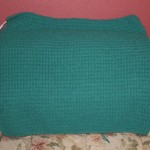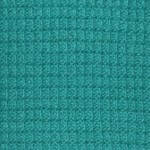Most of my free time is spent taking care of my dogs, and working at my online store. There’s always some new shipment that needs to be inventoried, the photo’s taken, descriptions written, and then put online. But, when my two nephews asked for something hand knit, I was determined to knit them something for Christmas. After looking at many patterns, I settled on two different scarves, each with a reversible pattern. I like the look of a scarf to be the same on both sides, so you do not have to fiddle with how it lays. I settled on acrylic yarn for the scarves because I knew their mother wants wash and wear clothing. Both scarves are knit with Kertzer Marble, a dk weight yarn. No, we do not stock this yarn, it was purchased some time ago to see if we wanted to carry it. But for these scarves, any yarn will work, just figure out how wide you want it be and calculate the width based on the stitches per inch.
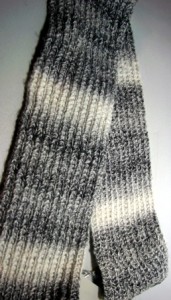
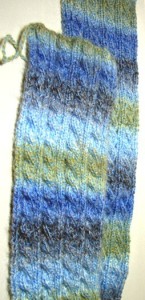
The first scarf is a Fisherman’s Farrow Pattern. It’s the black and white scarf. I’m not sure where I saw this pattern at, as there were many variations of it on the internet. The other scarf (the blue one) is the Palindrome Scarf, and that pattern can be found on Ravelry or the designer’s website. One scarf was worked with bamboo needles, and the other with Inox Express (metal) needles. I found that the bamboo was not a good choice for this yarn, and things went much smoother on the Inox needles. I did not switch from the bamboo because I have so many other knitting works in progress that used my other size five needles.
The scarves are about 90% finished, so I will make it in time for Christmas. If anyone is looking for a last minute scarf, the Fisherman’s Farrow scarf is so easy that if you start it now you can finish it by Christmas. I doubt that most people starting the Palindrome scarf today can finish by Christmas, unless you have lots of free time on your hands for the next two weeks. It’s not a hard pattern, but that one row of cables slows down the knitting, and for me became tedious. So, I would stop knitting the scarf and work on another project when I tired of knitting all those cables.
Here are scant directions for the scarves:
Fishermen’s Farrow scarf:
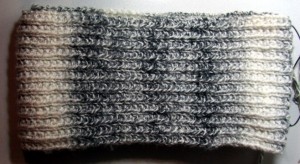
Pick your yarn, and cast on any number of stitches, but, make sure the number of stitches casts on are in multiples of three. Each row is the same:
Row 1 (k2, p1) repeat all the way across.
Row 2 (k2, p1) repeat all the way across.
Repeat these two rows until the scarf is as long as you want, and bind off. This makes a nice ribbed scarf that is identical on both sides. It is slightly different from a typical knit one purl one ribbing, as this pattern makes vertical ribbing of, a knit row, a moss stitch row, and a knit row. This is a nice pattern for a man, and in my case my 11-year-old nephew. The fabric is very flexible and not thick at all. Here is a close-up of the pattern. Click the image for a larger view:
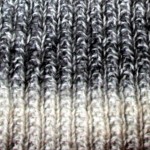
The Palindrome Scarf (A Reversible Cable Scarf):
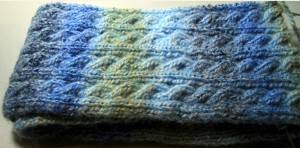
You can get the detailed pattern here. It is a very simple pattern. I cast on 52 stitches with size 7 needles, and knit it with size 5 needles, using dk weight yarn. I cast on (and knit) very tightly, so I always cast on with needles two sizes larger than the rest of the project is knit with. This scarf has a 12 stitch repeat, so to alter its width either add or subtract 12 stitches. It is a six-row pattern.
Rows 1, 2, 3, 4, and 6 are the same, (knit 2, purl 2) repeat this all the way across. Row 5 (k2, p2, C8F)* repeat this until the last 4 stitches, then k2, p2.
Note: To make the reversible cable, for the C8f, you will slip 4 stitches to a cable needle and hold in front, then k2, p2 from your knitting needle, then k2, p2 from the cable needle. So, even the cable is kept in the original k2, p2 pattern to make it reversible on each side.
Here is a close-up of the pattern. Click the image for a larger view:
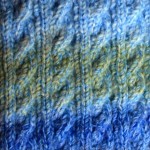
I knit this scarf for my 9-year-old nephew. It’s interesting how different the two scarves are even though they are knit with the same yarn, and same size needles. This pattern creates a much thicker knitted fabric. It’s still very nice, but is not flexible like the other fabric. Both are nice, but I probably would not use this pattern for an adult male. It’s just a bit thick for a man. The next time I make it, I think I will make it an 8-row pattern, which will make the cable less dense, and a better resulting fabric. My nephew has already seen the scarf and loves it. After the scarves are finished, I’m going to knit both boys ear flap hats out of the same yarn. I hope to finish the hats by the first of the year.
